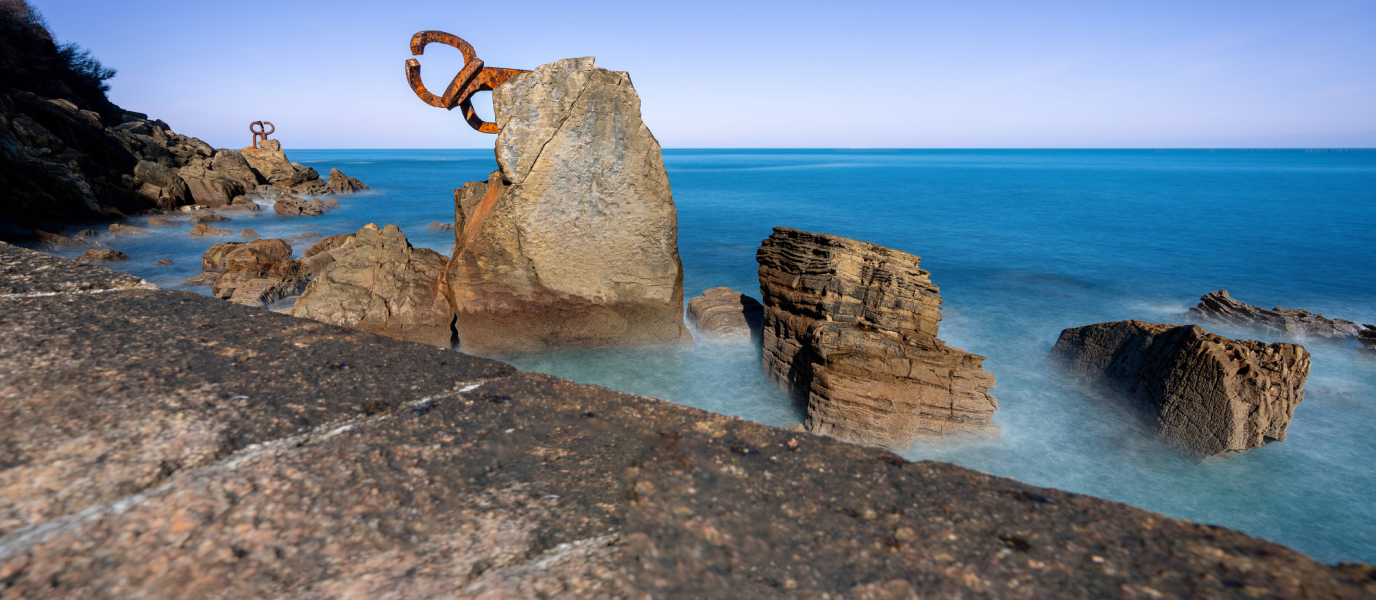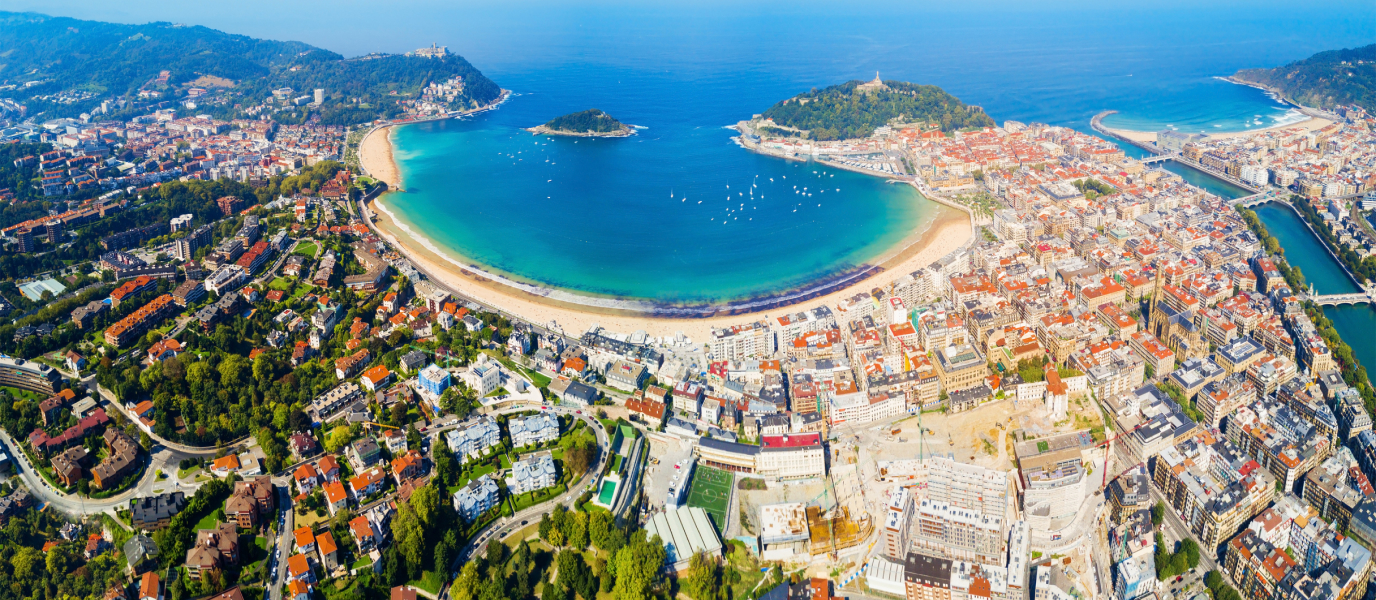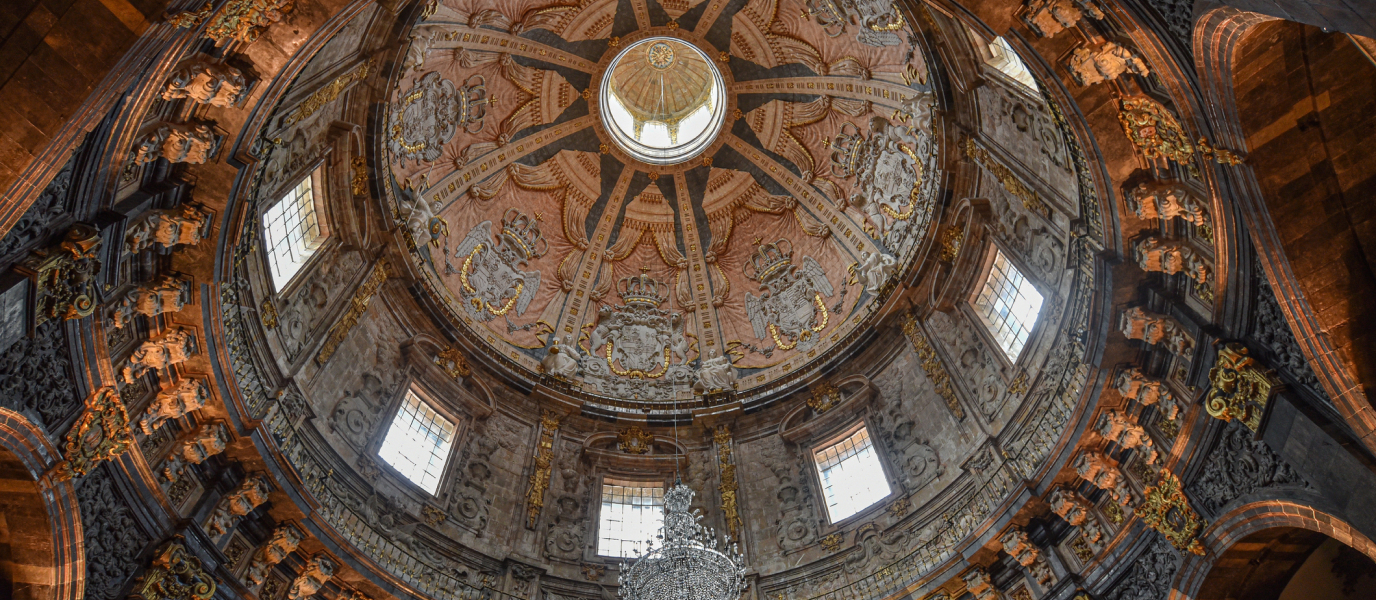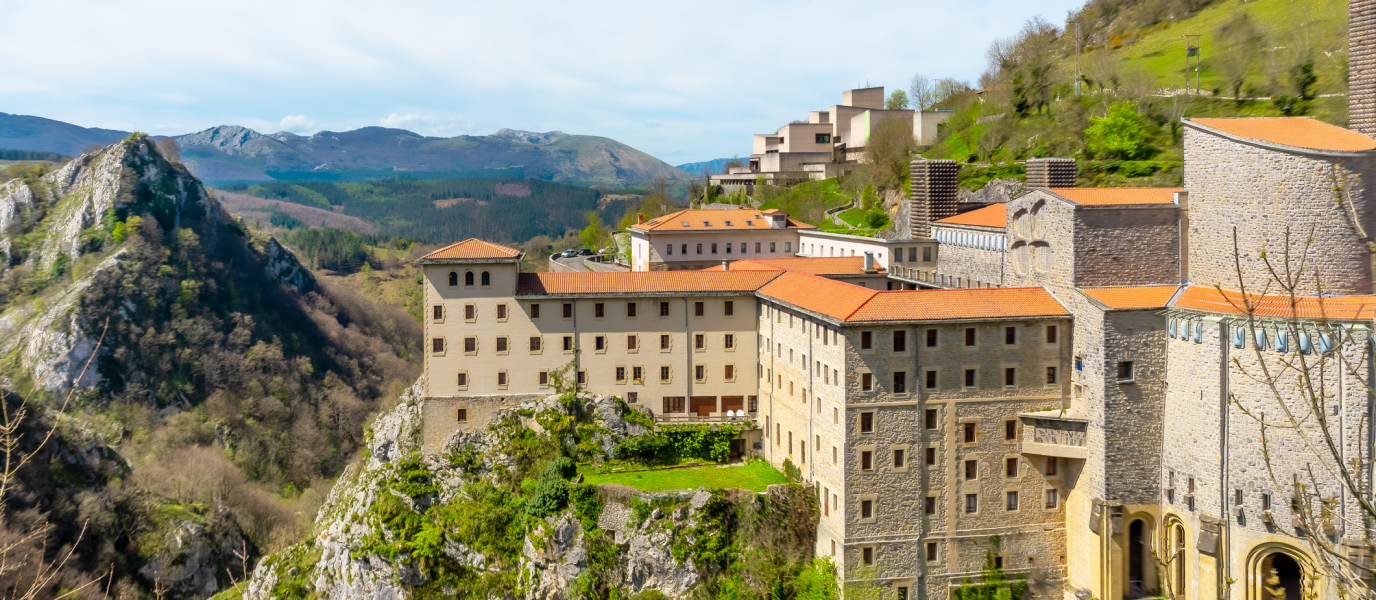The Peine del Viento or Comb of the Wind – a set of three sculptures designed by Eduardo Chillida and installed at the western end of Playa de Ondarreta – has become a great symbol of San Sebastián. The piece is regularly used to promote tourism in the area, as though it were a steel logo anchored in rock. It’s a moving experience to observe how the sea plays with the forms created by the Basque artist. The sculptures sit peacefully when the sea is calm, but when the waves get up the metal shapes comes to life in a sort of choreography in which nature comes together with art.
On days when the waves crash violently against the rocks, it’s as though the wind were being ‘combed’ by the metal shapes. Hence the name that Eduardo Chillida (San Sebastián, 1924-2002) gave to this set of sculptures. The work is completed with several holes in the ground that allow the waves to pass under the walkway before being shot skywards in roaring jets. Be careful not to get too close to the sculpture on really windy days – it’s not unusual to see jets of water over seven metres high. The scene on days like that is quite spectacular and you can expect the place to be busy.
The Peine del Viento, a symbol of San Sebastián
The Peine del Viento was completed in 1976 and has since become one of the great symbols of San Sebastián. The young Eduardo Chillida is said to have skipped school so that he could come to the site of his now-famous sculptures. There, he was captivated by the waves and the wind that battered this corner of San Sebastián with only the horizon to witness the spectacle. He later sculpted his ideas in steel and returned time and again to that place from his youth. He longed to ‘style’ it artistically, magically.
‘This place is the origin of everything. It’s the real creator of the work. All I did was discover it. The wind, the sea, the rock, all of these played a decisive role. It’s impossible to create a piece like this without taking the surroundings into account. It’s a piece made by me and not made by me’, said Eduardo Chillida when asked about his Peine del Viento. ‘It’s madness to try and compete for grandeur with the sea, the wind and the rocks.’
20 versions of the Peine del Viento
The Peine del Viento near Playa de Ondarreta isn’t the only work by Chillida bearing this title. This is in fact Peine del Viento XV, suggesting there are at least 14 others in the series.
The first, Estudio Peine del Viento I or Comb of the Wind Study I, was completed in 1952 and is made from sheets of iron. Chillida later experimented with other materials such as silver, stainless steel, wood and granite. Between 1966 and 1968 he created pieces ranging from Estudio Peine del Viento IV to Estudio Peine del Viento VIII.
Pieces IX (1974) through XIV bear the greatest resemblance to the final work, with their claw-like shapes that grab at space and blocks of steel that defy gravity.
Even after his most famous work was installed at Playa de Ondarreta, Eduardo Chillida continued to explore the theme and completed five more sculptures, starting with Estudio Peine del Viento XVI (1974) through to Peine del Viento XX (1999). All in all, the Basque artist made at least 20 variations on the same theme.
From car park to viewpoint
The site of Chillida’s sculptures at the western limit of Playa de Ondarreta was originally destined to be a car park. That is, until the mayor of San Sebastián rejected the project in favour of the artist’s vision, which sought to bring the forces of nature into dialogue with the steel sculptures.
Chillida entrusted the Patricio Echeverría foundry in Gipuzkoa with forging the three pieces in Corten steel, each weighing 10 tonnes and measuring more than 2 metres in width and height. The pieces gradually took on a reddish-orange hue owing to the high copper, chrome and nickel content in the Corten steel.
While Chillida looked after the metal works, it was architect Luis Peña Ganchegui who designed the access platform and seating area where visitors could enjoy a work of art that represents the point where town and nature meet.
Installing Chillida’s sculptures
The first of the three sculptures to be installed sits furthest away at 80 metres from the shore. Getting it out there was tricky. The team considered using a helicopter and toyed with lowering the sculpture from the road that leads to the lighthouse on Monte Igueldo. They even considered transporting it on a raft or using a floating crane. All were considered too dangerous, and in the end they opted for a railed walkway capable of supporting the weight of the sculpture. After that feat of engineering, getting the remaining two sculptures into place was a piece of cake.
The street leading to the Peine del Viento was named after Eduardo Chillida following his death in 2002. The private, intimate place to which the artist was drawn in his youth is now a popular viewpoint. Sit here and dream for a while as you gaze over the Cantabrian Sea in all its wild beauty.
If you’re interested in finding out more about the life and work of Eduardo Chillida, visit Chillida Leku, an outdoor museum where the artist’s steel and granite sculptures sit in nature as though they’ve always been there.


































































